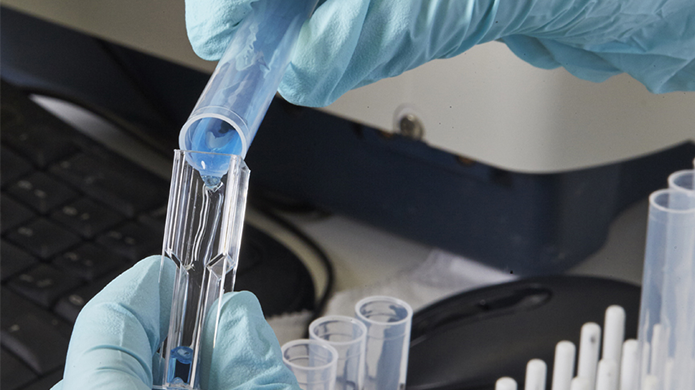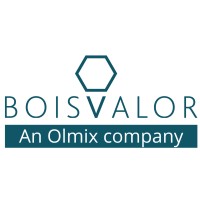Evolution of virulence is playing an important role in the emergence of some diseases in aquaculture.
The world population is growing fast, from 7.5 billion in 2019 to 9.7 billion by 2050 (United Nations Department of Economic and Social Affairs). As a matter of fact, we need to produce more food to support this growing population. While cereals and roots account for 82% of the global food supply, meat products only account for 4.64% with pork as the most consumed meat, followed by chicken and beef.
However, with 1.69% share of global food supply, seafood, where aquaculture represents more than 50%, is the fastest growing sector with 7.4% Compound Annual Growth Rate (CAGR) and may become the 3rd most consumed meat product by 2020. Given the rapid growth and dynamic nature of aquaculture, it seems likely that even without evolution, epidemiological changes will lead to increases in the disease burden of aquaculture. Strong evidence, nevertheless, suggests that pathogen evolution, including evolution of virulence, is also playing a role in the emergence of some diseases in aquaculture (Walker and Winton 2010).
Farming practices as potential disease driver
In an attempt to raise awareness, David A. Kennedy et al. (2015) surveyed various aquaculture practices that can create conditions that may favor the development of highly virulent pathogens and lead to increased disease severity. It’s however unrealistic to expect all evolutionary changes to be explained by evolution of virulence theory alone.
As highly virulent strains tend to truncate infectious periods by killing their hosts, they thus have to have higher transmission rate to survive and spread while their hosts are still alive. Strains with low virulence that do not kill their host can thus have lower transmission rate. Thus, high host densities in Recirculation Aquaculture System (RAS), raceways or shrimp nursery systems can allow for the maintenance of pathogens that would otherwise kill hosts too quickly to persist (Anderson and May 1982).
Moreover, shortening the effective host lifespan, for example by compressing the rearing cycle through genetic improvement or farming practices, may thus favor evolution of increased pathogen virulence (May and Anderson 1983; Choo et al. 2003; Nidelet et al. 2009). The pathogens that theory predicts are most likely to evolve higher virulence due to generational compression are those that can induce chronic and persistent infections with lifelong potential for pathogen transmission, such as the koi herpesvirus, Cyprinid herpesvirus-3 in koi and carp (Iouze et al. 2011), infectious pancreatic necrosis virus in salmonids (Yamamoto 1975), and white spot syndrome virus in shrimp (Tsai et al. 1999).

Shrimp producers aim to improve feed performance while preparing animals to better fight against pathogens.
It is commonly accepted that the more genetic variation in the host population, the less specialized the pathogen will be (Lenski and Levin 1985; Ladle 1992; Ebert and Hamilton 1996; Jokela et al. 2009; Morran et al. 2011). However, reduced genetic diversity, due to selection of beneficial traits, has been observed in mass production systems, such as agriculture and livestock before.
Aquaculture is also trending towards hosts with high specialization and thus pathogens with higher virulence. Direct evidence of it has also been observed between host species for infectious hematopoietic necrosis virus (IHNV) (Garver et al. 2006) and Gyrodactylus salaris (Bakke et al. 1990; Bakke 1991) in salmonids, and for viral hemorrhagic septicemia virus (VHSV) across five finfish species (Emmenegger et al. 2013).
Pathogens can also adapt and specialize according to the environment and become endemic where their eradication is impossible. Thus, the chance of possible host species jumps increases and this often leads to higher virulence in new host species. This was the case for the fish rhabdoviruses IHNV and VHSV that jump from sockeye and pelagic fish (herring) to rainbow trout, with heavy economic losses (Kurath et al. 2003; Einer-Jensen et al. 2004). Moreover, in the context of mixed infections, pathogens will adapt to be more competitive either by faster reproduction rate or by developing toxins such as antibacterial ones, with overall higher hosts mortality rate. Thus, evolution will favor the more virulent strain (Bremermann and Pickering 1983; Nowak and May 1994).
Mitigating infectious diseases is one of many challenges in aquaculture. From the perspective of virulence evolution, the economic consideration that tends to favor high productivity by increasing density, shortening rearing time, reducing genetic diversity by breed selection and miss use of antibiotics, could lead to the evolution of increased virulence as described above. Altering rearing practices or enhancing host natural immune defenses in the interest of preventing pathogen evolution could potentially give a long-term benefit with short-term costs.

Pathogens can also adapt and specialize according to the environment
The key for aquaculture immunity: to catch up with pathogens’ evolution
As pathogens can evolve, so can the host’s immune mechanisms. However, immunity comes with a Price (metabolic and maintenance) that should be balanced by the protection it confers. Thus, depending on the pathogen occurrence and virulence, different strategies to identify and target the pathogen were adopted. Innate and adaptive immune systems can be a first set of strategies, the first one being the most efficient to deal with persistent and frequent pathogens while the second one is more suitable for rare and transient pathogens (Andreas Mayer et al. 2016). An important characteristic inherent to fish, is that the immune system tends to rely more on its innate response for the clearance of an invading microorganism (Magnadottir, 2006).

Olmix has identified, extracted and patented, specific Sulfated Polysaccharides from marine algae.
The natural immune defense seems to be a good candidate against pathogen evolution as it can evolve alongside it and can be enhanced at a reasonable cost. However, a good understanding of the immune system is a prerequisite to its enhancement. The immune reaction is initiated by the recognition of pathogen associated molecular patterns (PAMPs) by cellular or humoral pattern recognition receptors/proteins (PRRs) (Abbas et al., 2012; Tort et al., 2003). It will then trigger a cascade of messenger molecule (cytokine, chemokines) secretion (Roher et al., 2011) which aims to activate a general immune response, including recruiting phagocytes and lymphocytes via chemo-taxis, and the activation or secretion of cellular and humoral antimicrobial defense mechanisms, such as the complement system, lysozyme, antimicrobial peptides, etc. (Abbas et al., 2012; Bayne and Gerwick, 2001; Reyes-Cerpa et al., 2012).
Some natural molecules also have proven to have the ability to induce messenger production and thus immunemodulation. After years of research with the seaweeds, Olmix has identified, extracted and patented, specific Sulfated Polysaccharides extracted from marine algae, called MSP®IMMUNITY able modulate immune system, thus optimizing immune defenses of the host.
Olmix has developed also commercial products based on MSP®IMMUNITY to reinforce immune system ALGIMUN®, in powder can be added to the feed (it is resistant to extrusion) during the phases that are known to be challenging for the animals.
Searup®, a liquid complementary feed based on MSP®IMMUNITY gives the farmer the flexibility and reactivity of use. Both allow to stay one step ahead of pathogens by triggering the fish complete lines of defense, before an infection.




